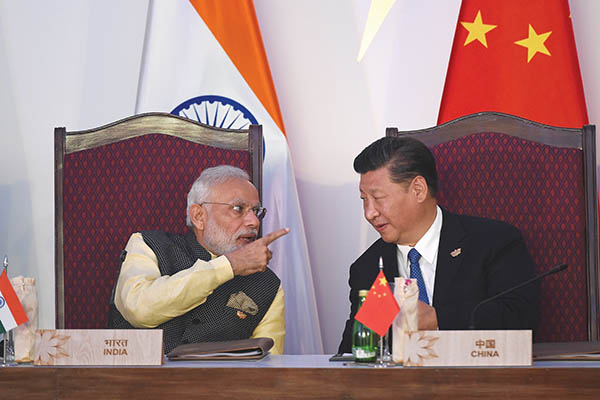
File photo. Prakash Singh—AFP
One could not think that—given India’s participation in the U.S. strategy of confronting China aggressively in the Far East, and the U.S.-China faceoff over Taiwan—there would emerge a policy of improvement of relations between China and India. But it seems to be happening. Apparently this is not happening suddenly but has been on the cards for some time. In the 1970s the two countries began a series of confidence-building measures (CBMs), enabling Delhi and Beijing to normalize and diversify their relationship based on various multilateral mechanisms such as the Asia Infrastructure Investment Bank, the Shanghai Cooperation Organization, East Asia Summit and the BRICS grouping (Brazil, Russia, India, China and South Africa).
It is known that despite border clashes that ominously looked broadening into a war, bilateral trade flourished, and Chinese investment in India’s telecom, electronics, solar and, most notably, digital sectors increased by leaps and bounds. With China’s rise, India saw opportunities for a win-win cooperation, but over 20 years India was also wary of the dangers of widening economic, military and technological asymmetries between the two countries. Unluckily, the two had skirmishes along the disputed border. Yet India wanted to change that. Indian Prime Minister Narendra Modi spoke at the 2018 Shangri La Dialogue in Singapore wishing for India and China to “work together in trust and confidence, sensitive to each other’s interests.”
It seems “U.S. partner” India, despite its participation in the American far-east confrontation with China, wants to upgrade its normalization with its northern neighbor. Ex-ambassador Bhadrakumar has welcomed the nascent Indo-China normalization: “A consensus with China that neither party will try to gain territorial advantage is the maximum that can be expected today and the irreducible minimum required until such time as the Indian opinion can accept a fair and just settlement of the boundary question in a spirit of compromise. Notably, Chinese commentators have appreciated India side’s oil purchases from Russia giving primacy to national interests. Conceivably, such assertion of India’s strategic autonomy created a favorable ambiance in the ongoing talks at various levels with China, leading to the disengagement in Gogra-Hot springs.”
Given this Indo-China “normalization” and an already strong trade relationship between the two, and China’s CPEC trade route coming through Pakistan next-door to India, this may be the juncture for an Indo-Pak normalization, too, opening up bilateral trade and provision to India of a land trade route through Pakistan to Afghanistan and Central Asia. That potential normalization could open up trade routes that lie buried under decades of propaganda war, forcing the current disenchanted Prime Minister of Pakistan, Shehbaz Sharif, to speak of “good relations” with India. If this happens, many good things will take place, above all, improvement in the lives of the Muslim population of India-held Kashmir. China can assist as the third party in the process ensuring that Pakistan will no longer be endangered from both its eastern and western frontiers.
